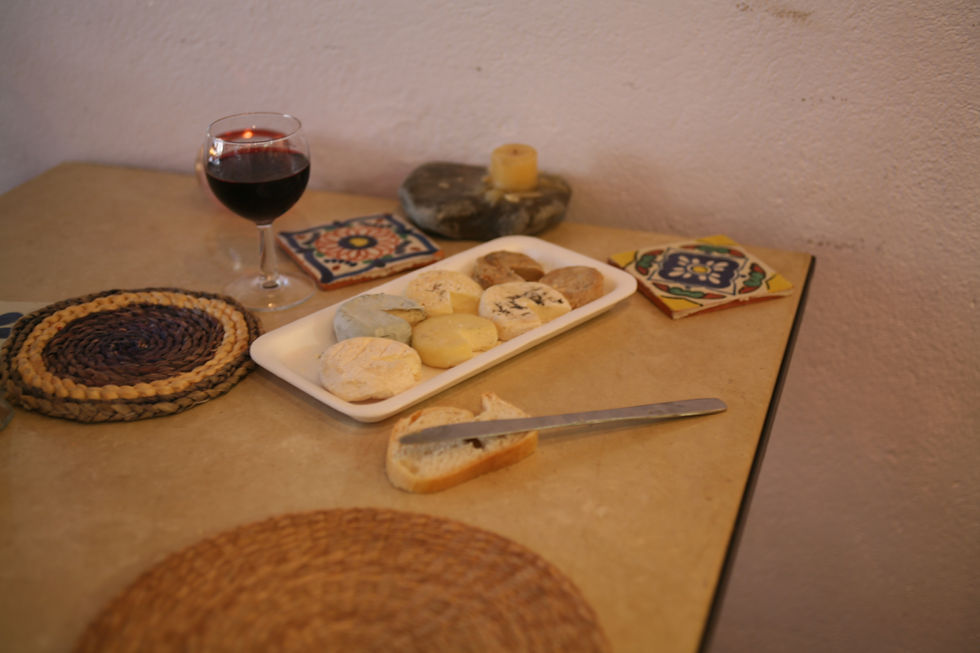(29) Halloumi, one of the two Cyprus gems, worth two of them!
- C Demeyer
- Feb 26, 2022
- 3 min read
Halloumi is a famous Cypriot cheese based on an early history method. The trick with the title is the fact that it is known by two names, the second being Hellim; its original and native name is Χαλλούμι.

Staff Party cheese trolley (2009) - good old times!
Obviously, this cheese is worth knowing for its quality, but as well because of its history. After all, it has been made for around two millennia, and this is proof enough that this is a well deserving product.
I propose to give you a better understanding of it through my usual style of description, as found below.
History
Halloumi is said to dates back from very ancient times, and a document of 1554 in a codex containing five manuscripts on the history of Cyprus kept in the library of the Correr Museum in Venice mentioned it as “Calumi”. The cheese was exported to many countries on a regular basis from the seventeenth century, meaning that it was part of the diet of the inhabitant of the island way before then. Mint used to be incorporated for its many properties and taste of freshness. Recently a problem arose when Northern Cypriots tried to export Hellim, as they are not recognised or part of the EU the solution was to have the island unified and then the production would be part of the whole country and treated as such. Furthermore, as the PDO covers actually the Greek side of the island, the northern production is somewhat in limbo with quality control in question as well. It has been granted PDO status in 2015; this proved to be contrary to many British dairies which were making Halloumi and derided the Cypriote product when the request of recognition was made.
Production area
The area of production of this cheese as recognised under the terms of the PDO is the administrative boundaries of the districts of Nicosia, Limassol, Larnaca, Famaguasta, Paphos, and Kyrenia.
It is almost all of the island of Cyprus, only omitting the north-east tip of the country. The climate is Mediterranean, very hot in Summer with wet and cool winters. The flora is very varied and abundant, one of the best in the Mediterranean Sea, and the geology means that water is available when the rains stop with the many rivers which flows toward the plain areas through the rest of the year.
Method of production
The milk is from the area of production and is of goat and/or ewe origin with possible addition of cow, but never only cow’s milk. It is pasteurised, or heated above 65oc pasteurised, or heated above 65oc, and if cow’s milk is used it cannot be more than the other animals’. The animals are of local breeds, and graze as much as possible weather permitting with minimum supplementary feed.
The milk is brought up to body temperature with possibly some lactic cultures and traditional animal rennet is added for coagulation. The resulting curd mass is gently cut while the temperature is brought slightly up. The grains sink to the bottom of the vat, the whey is removed and kept separate and the curd is made as a mass.
Then it is cooked in whey, over 90oc and at least 30 minutes. The new cheese is gathered by hand and folded with a leaf of mint in the middle. It is sold fresh, or is then matured for a minimum of 40 days in salted whey. When fresh it is elastic, and when matured it is supple.
Look, feel, and taste
The specific look of this small lump of cheese has a touch of green in the middle, most of the times, as a leaf of mint is introduced between the folds. Unprepared, or not cooked if you prefer, it has a pungent wet hay aroma and a really salty taste with a dairy feel more pronounced for the fresh version.
Safe keeping
To be consumed fresh or kept for a few days if matured, wrap in cling film or cheese paper and keep in refrigerator.
Statistics
17200 tonnes in 2015.
And remember, give life to your taste buds, and above all, enjoy real cheese.



Comments